40 Best Superfoods for People Over 40
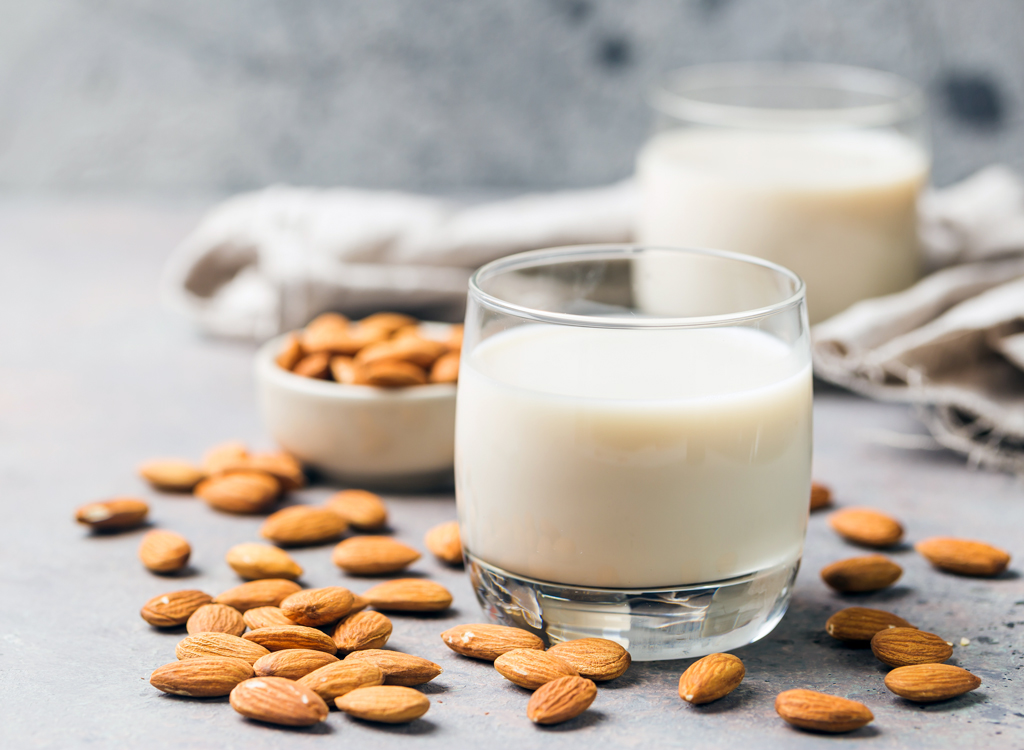
As we age, it becomes increasingly more difficult to combat chronic diseases, maintain a healthy metabolism, and keep belly fat at bay. But contrary to what you may believe, your health isn’t actually doomed to plummet downhill with every turned page of the calendar. Sure, you may not be able to cut out bread for a week and lose pounds as easily you did in your 20s, but you certainly can add specific foods—like these superfoods—to your diet in your quest to turn back time.
Choosing these youth-promoting foods will equip your body with the cancer-fighting, wrinkle-smoothing, and metabolism-revving vitamins and nutrients it needs to help you look and feel young and vibrant.
So the next time you head out for a grub run, make sure to stock up on our stellar list of the best superfoods to eat after 40, and even try out any of these 15 Underrated Weight Loss Tips That Actually Work. Your body will thank you.
Wild Salmon
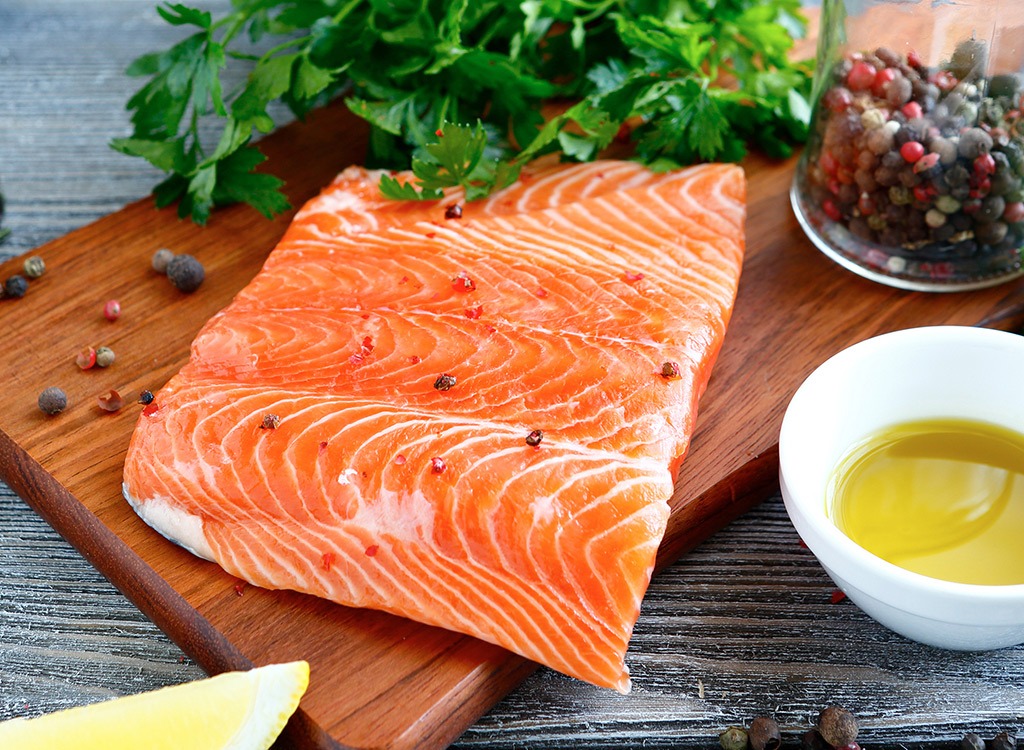
“Hormonal changes in your 40s can affect your appetite hormones, ghrelin, and leptin,” says Lauren Slayton, MS, RD, and founder of Foodtrainers. “Both supplemental vitamin D3 and extra lean protein can help keep your appetite under control.” Wild salmon fits the bill, boasting some of the highest levels of weight loss-aiding vitamin D3 as well as muscle-maintaining protein.
Plant-Based Milk

If your tummy has been rounder than a pufferfish, it’s time to cut foods that cause bloat from your diet. “As we age, our bodies can’t break down lactose as efficiently. When we can’t efficiently digest something, it tends to cause gas and bloat, which is the opposite of a flat stomach. Avoid dairy foods, and you’ll likely see some improvement,” says Amy Shapiro MS, RD, CDN of Real Nutrition NYC. Can’t give up your late-night cereal sessions? You don’t have to! Just opt for these better-for-you milk alternatives.
Chia Seeds
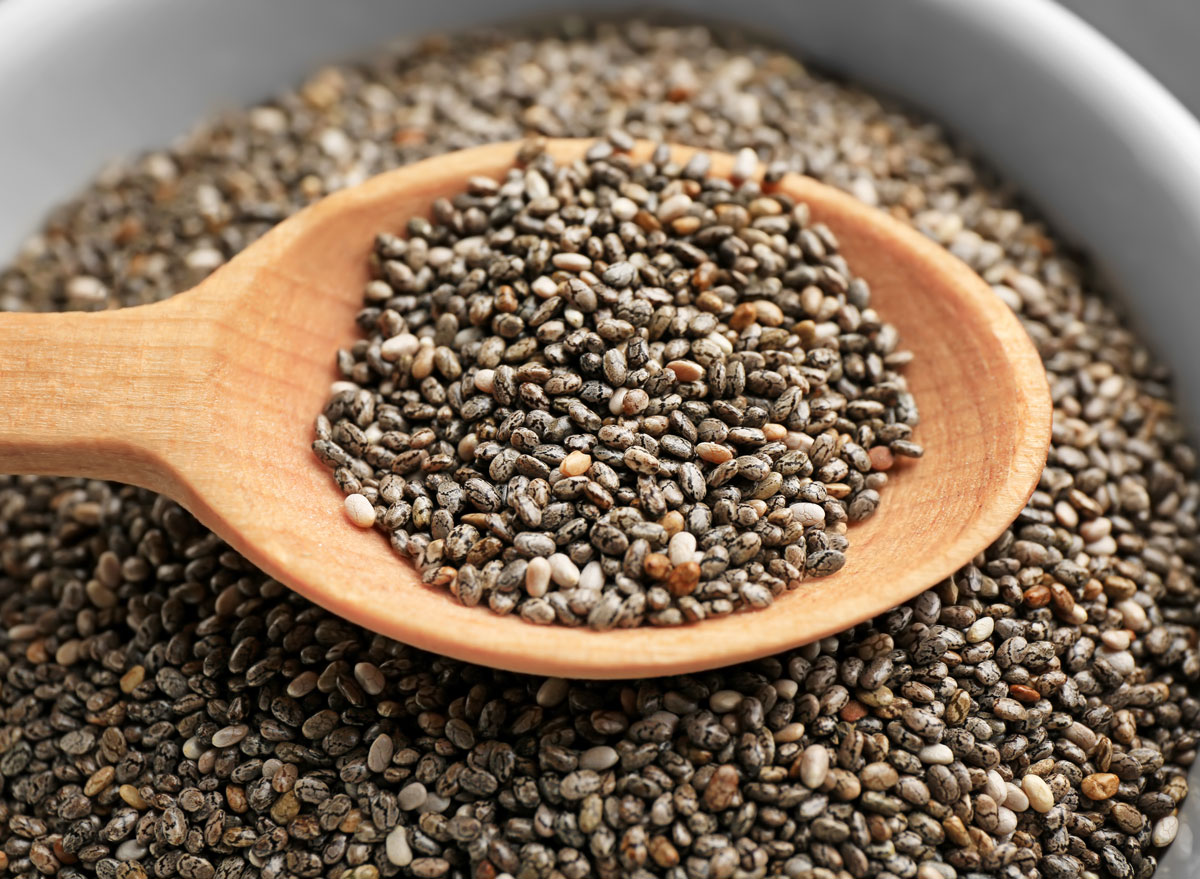
“Many types of healthy fats can help you lose body fat. Omega-3s are one type with these superpowers,” Slayton says. “Try to have one omega-3 rich food every day.” Sprinkling chia seeds into your morning smoothie or oats is an effortless way to reach your daily quota. (Bonus: chia seeds are also one of the best high fiber foods!)
Kimchi
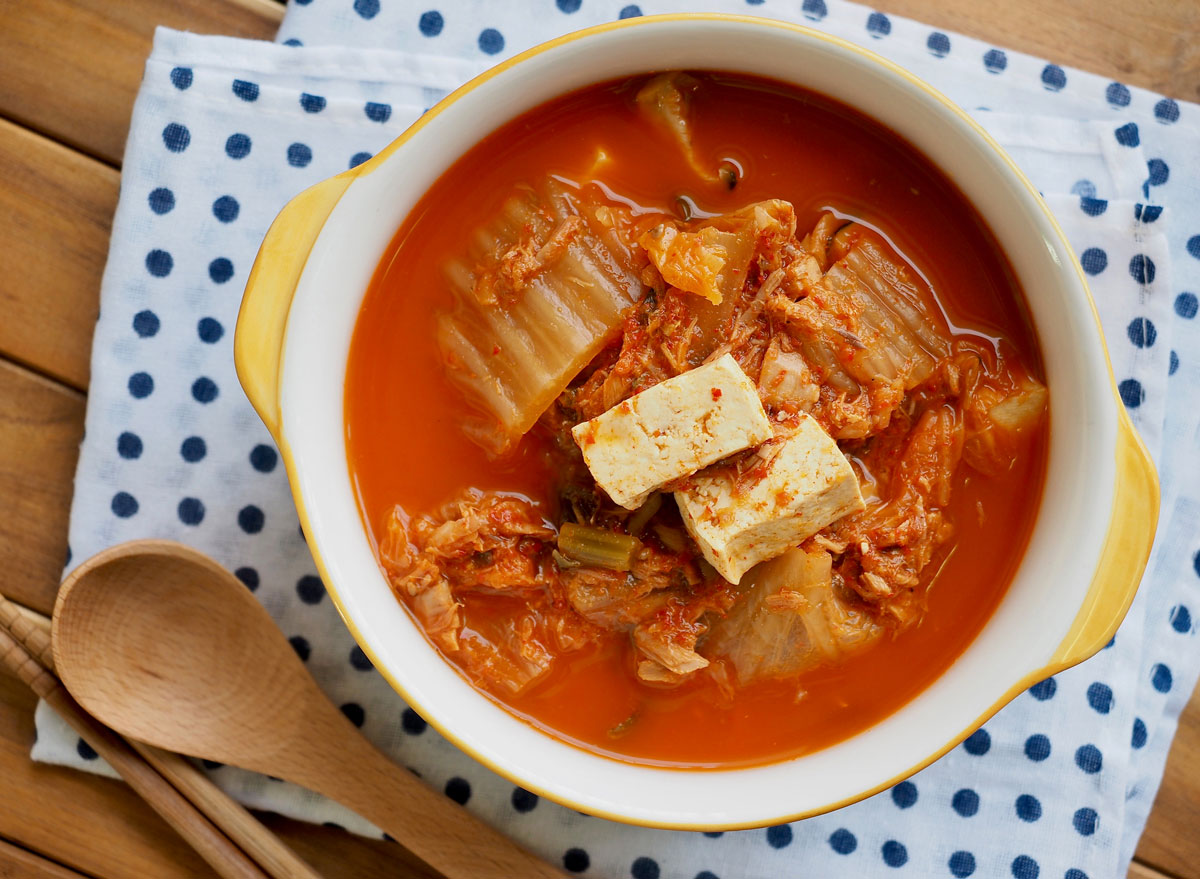
If you’ve stuffed your diet with processed foods, uncomfortable digestive problems can start creeping up in your forties. Thankfully, we have fermented fare to combat that. “A daily serving of sauerkraut, kimchi, kefir, sour pickles, kombucha, or live culture yogurt can help balance your gut bacteria,” says Dr. Rob Silverman, DC of NY ChiroCare.
Raspberries

Not only do raspberries contain cancer-fighting phytochemicals, but these textured berries also contain an impressive eight grams of fiber per cup, which can help you feel fuller longer in addition to relieving constipation.
Blueberries

Blueberries are notorious for being jam-packed with antioxidants, which can fend off anything from the flu to weight-inducing inflammation by fighting free radicals. Toss the indigo orbs into whole-grain pancakes or eat them on their own for a belly-filling snack!
Eggs
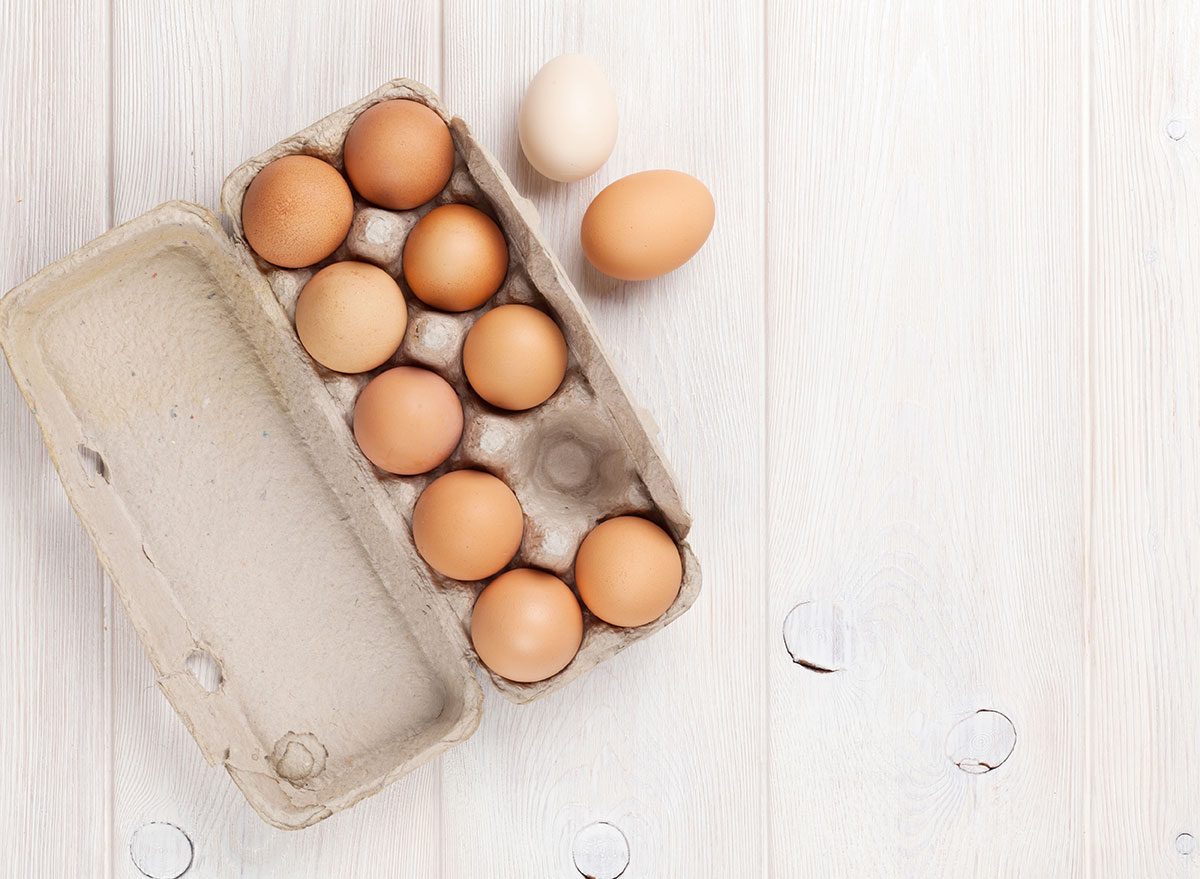
Making an omelet? Forget separating the white from the yolk and embrace the whole egg! The healthy fats within the yolks can help you feel fuller longer and curb cravings, explains Kayleen St. John, MS, RD. Not to mention, choline—a belly fat-blasting nutrient—is only present in the orange part of the egg, rather than the whites. Next time you’re whipping up a scramble, crack the egg yolk and all into the pan.
Avocado
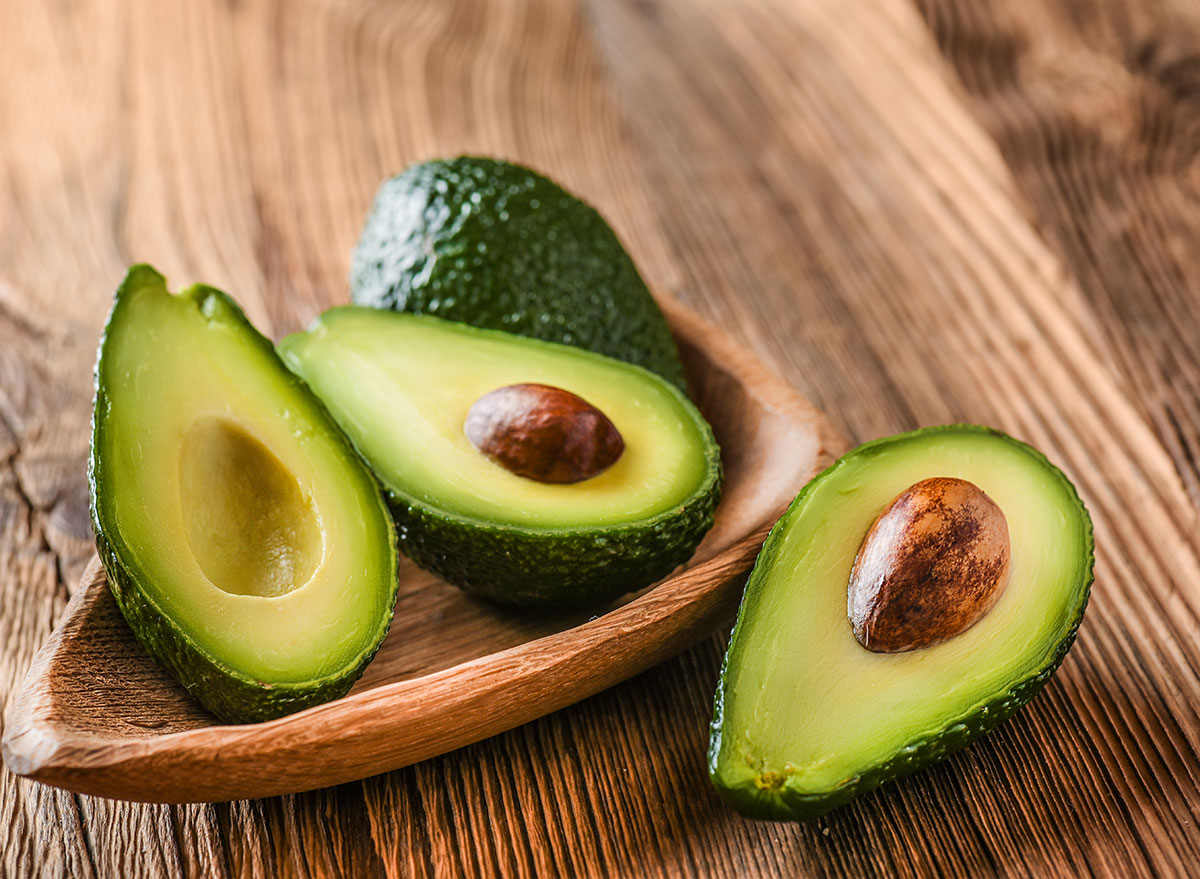
Avocados, in all of their creamy glory, aren’t only pleasing to your taste buds—they can be your body’s best friend, too. This fatty fruit has healthy monounsaturated fats that can help lower LDL cholesterol (the bad fat that clogs arteries) and placate a growling tummy. According to a study published in Nutrition Journal, people who noshed on just half a fresh avocado with lunch reported a 40 percent decreased desire to eat for hours after.
Onions
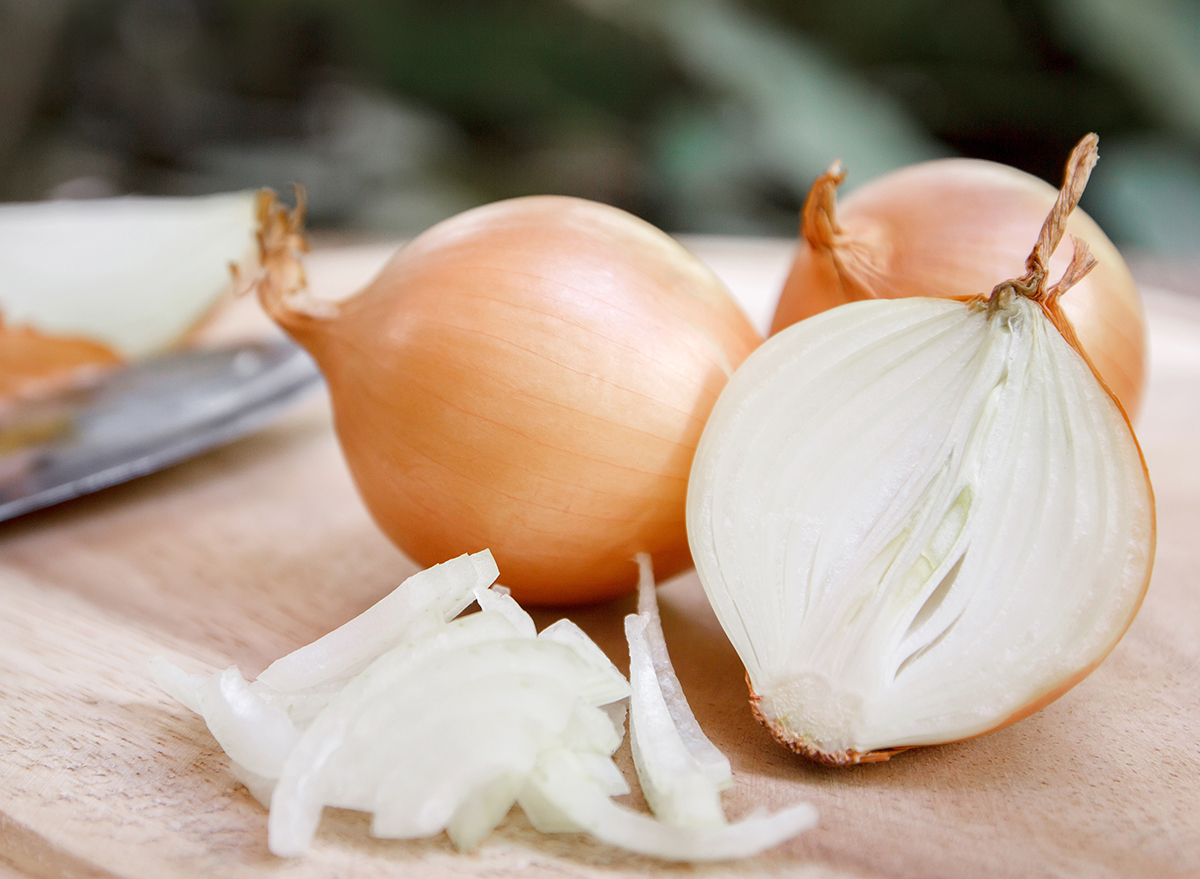
Not only clad with the powers of transforming even the blandest burger into a scrumptious bite, onions are also stellar at combating cancer. According to University of Guelph researchers, Ontario-grown red onions pack a solid dose of quercetin and anthocyanin, which can fight off colon and breast cancers. “Onions activate pathways that encourage cancer cells to undergo cell death,” Abdulmonem Murayyan, the study’s lead author, explained. “They promote an unfavorable environment for cancer cells and they disrupt communication between cancer cells, which inhibits growth.”
Chickpeas
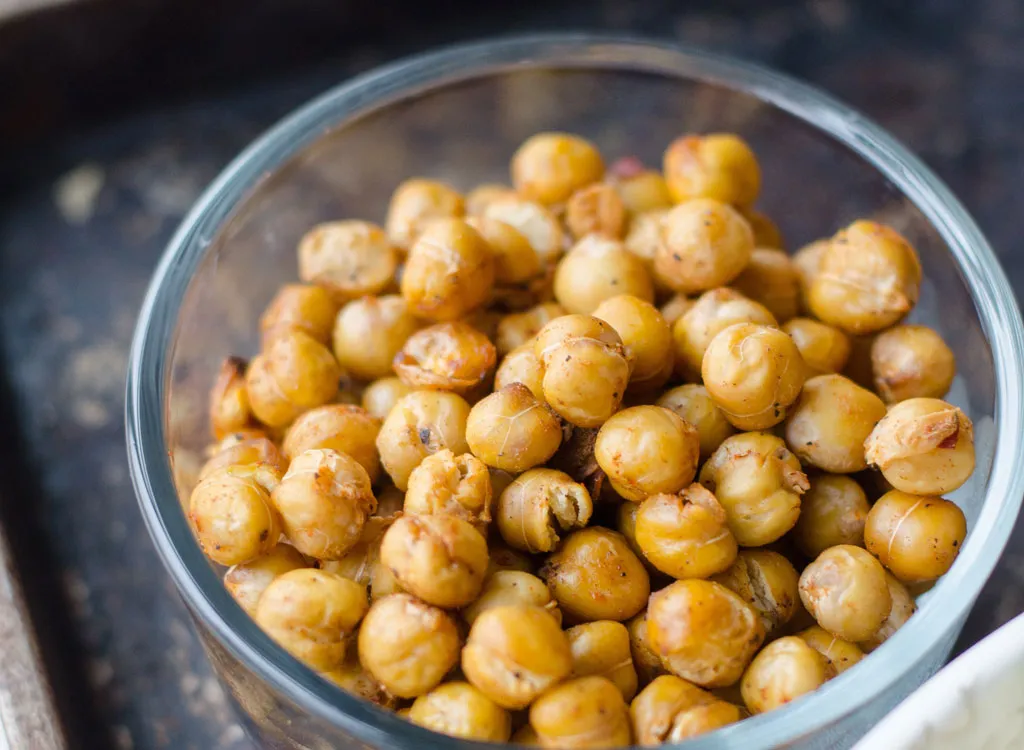
A half-cup serving of garbanzo beans packs in about eight grams of fiber, helping you easily hit the FDA’s 25-gram daily fiber recommendation. While these beans make a seriously satiating salad topper, we also love blending them with a bit of tahini, lemon juice, and salt for a mouth-watering homemade hummus.
Almonds
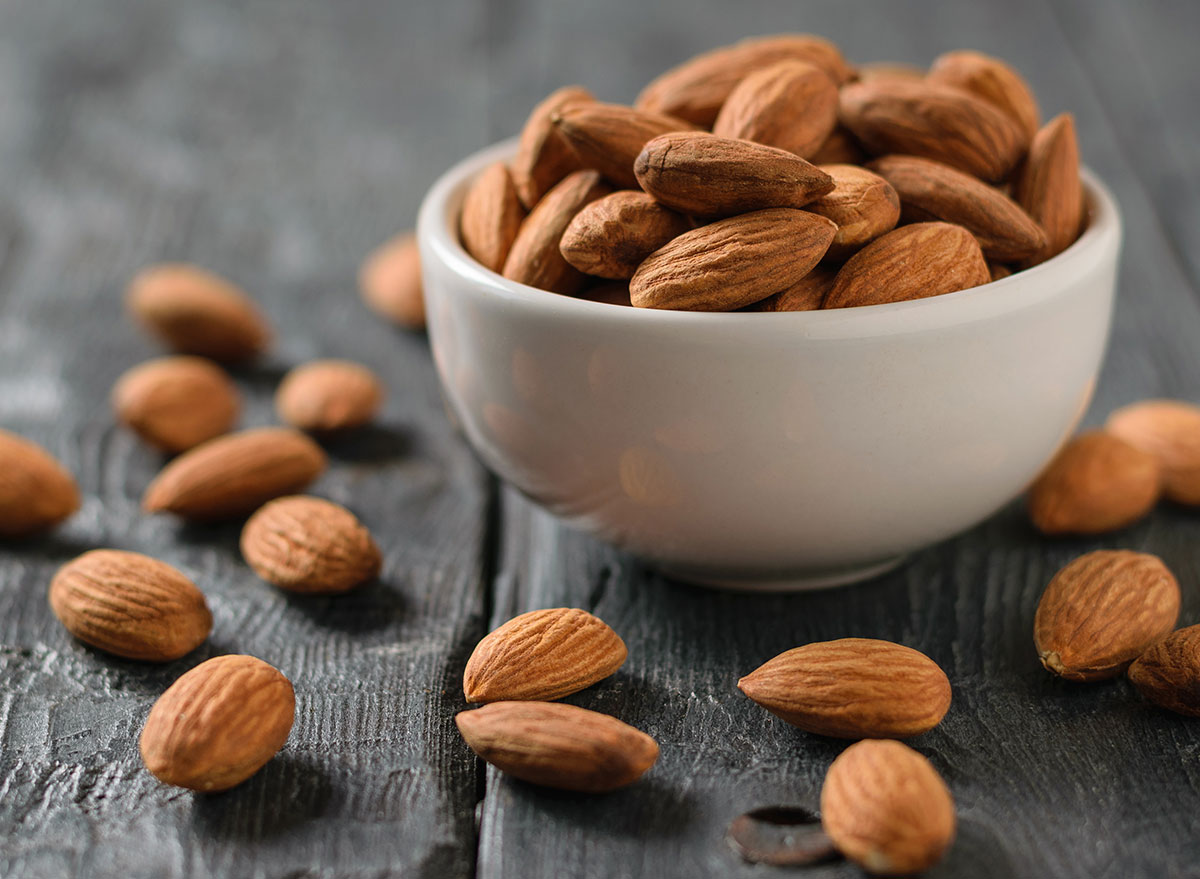
A tasty, portable snack, these subtly sweet nuts contain heart-healthy monounsaturated and polyunsaturated fats that can help lower LDL cholesterol. Although munching on almonds during any part of your day is a smart choice, getting your daily serving before you hit the gym can actually help you stay even slimmer. A study in the Journal of the International Society of Sports Nutrition found that the amino acid L-arginine, which almonds are brimming with, can help you burn more fat and carbs during workouts.
Spinach
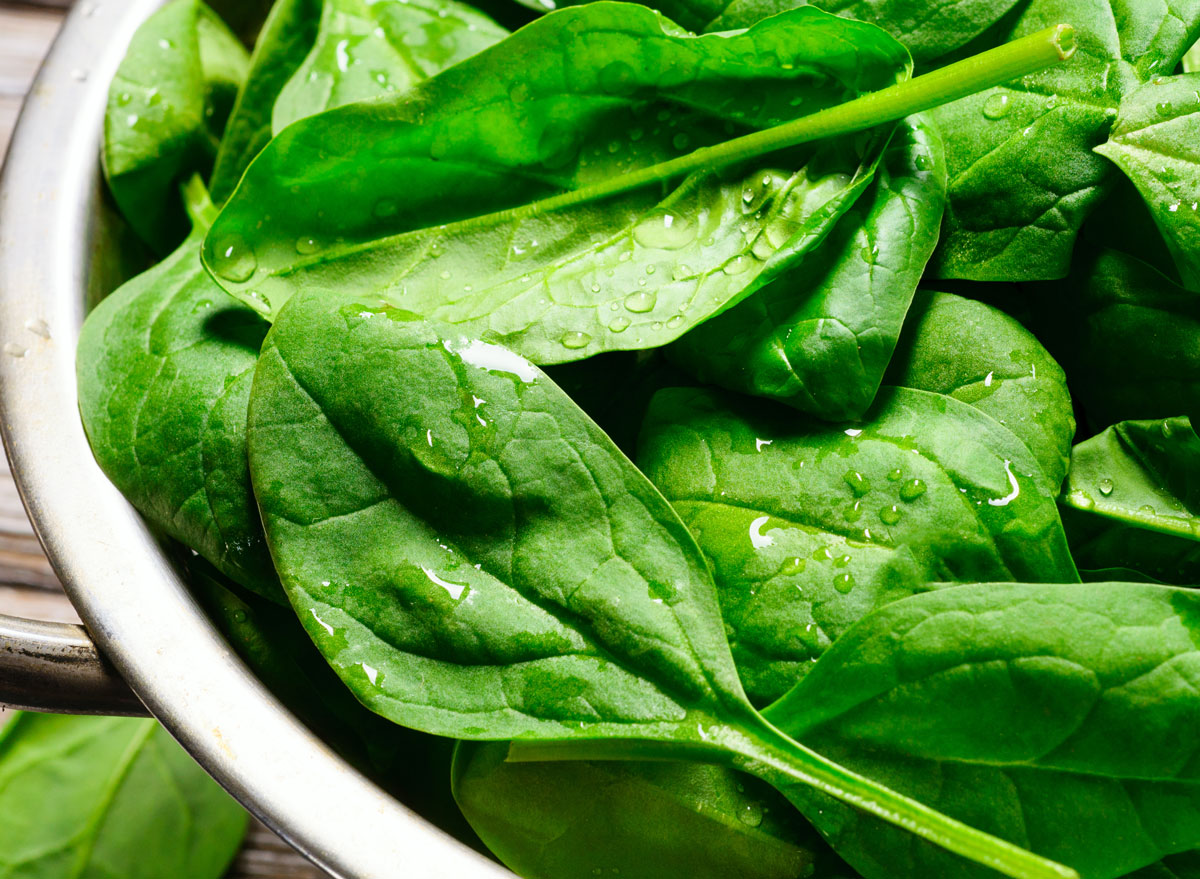
Adding high-volume leafy greens like spinach to your diet is always a good idea if achieving a bikini body is your goal. Popeye’s favorite pick is rich in vitamin E as well as the amino acid betaine and the nutrient choline, which work together to turn off fat-storing genes in the liver.
Carrots

Just one medium-sized carrot is bursting with 203 percent of your daily recommended vitamin A, which will help keep your skin smooth and vision as sharp as it was in your 20s. “This vegetable is orange thanks to high levels of beta-carotene, which is a precursor to vitamin A… which also happens to be a form of the main active ingredient in Retin-A (the topical ointment that helps fight dark spots, wrinkles, and acne by increasing cell turnover),” says certified board dermatologist and Founder of Baumann Cosmetic & Research Institute Dr. Leslie Baumann.
Turmeric
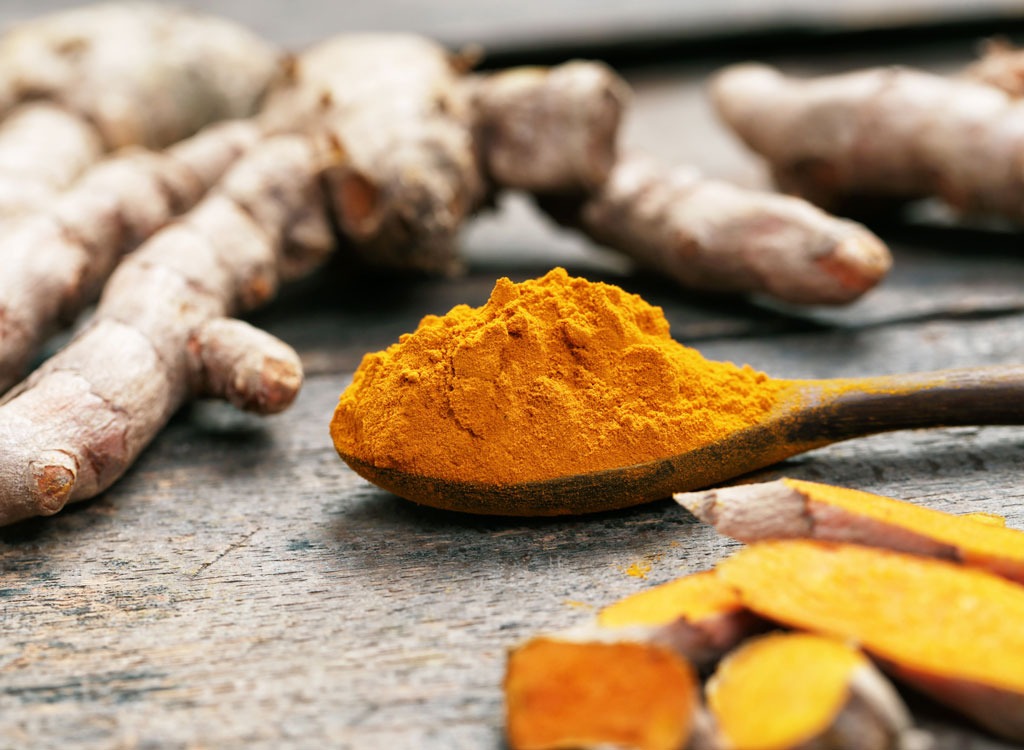
Curcumin, this bright-colored root spice’s main antioxidant, has shown to prevent a plethora of ailments from inflammation to cancer. Good thing you can easily reap its benefits by sprinkling turmeric into practically anything! (We especially love it on over-easy eggs.) To enhance its effects, pair turmeric with black pepper, as the latter activates the former’s bioavailability.
Watercress
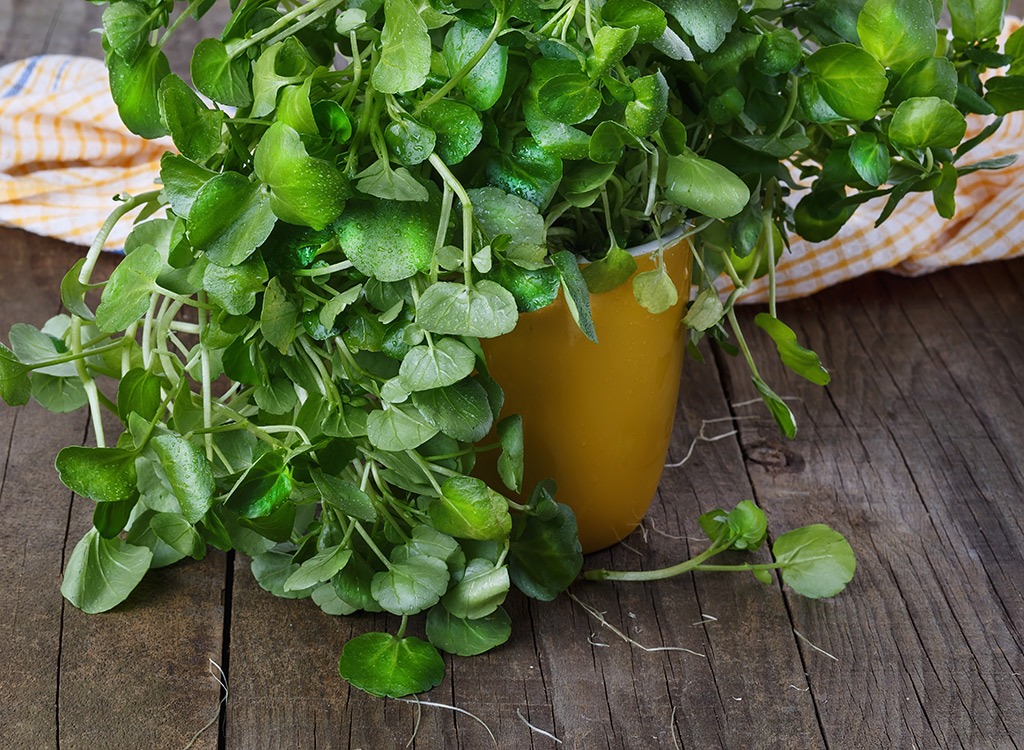
If you’ve never added this delicate green to your salads, now is definitely the time to start. A study in the American Journal of Clinical Nutrition suggests that consuming 85 grams of raw watercress (about two cups) could reduce DNA damage linked to cancer by 17 percent. What’s more, the leafy green is teeming with beta-carotene and vitamin A, two compounds essential for youthful skin. No wonder why watercress is our #1 best superfood healthier than kale!
Watermelon
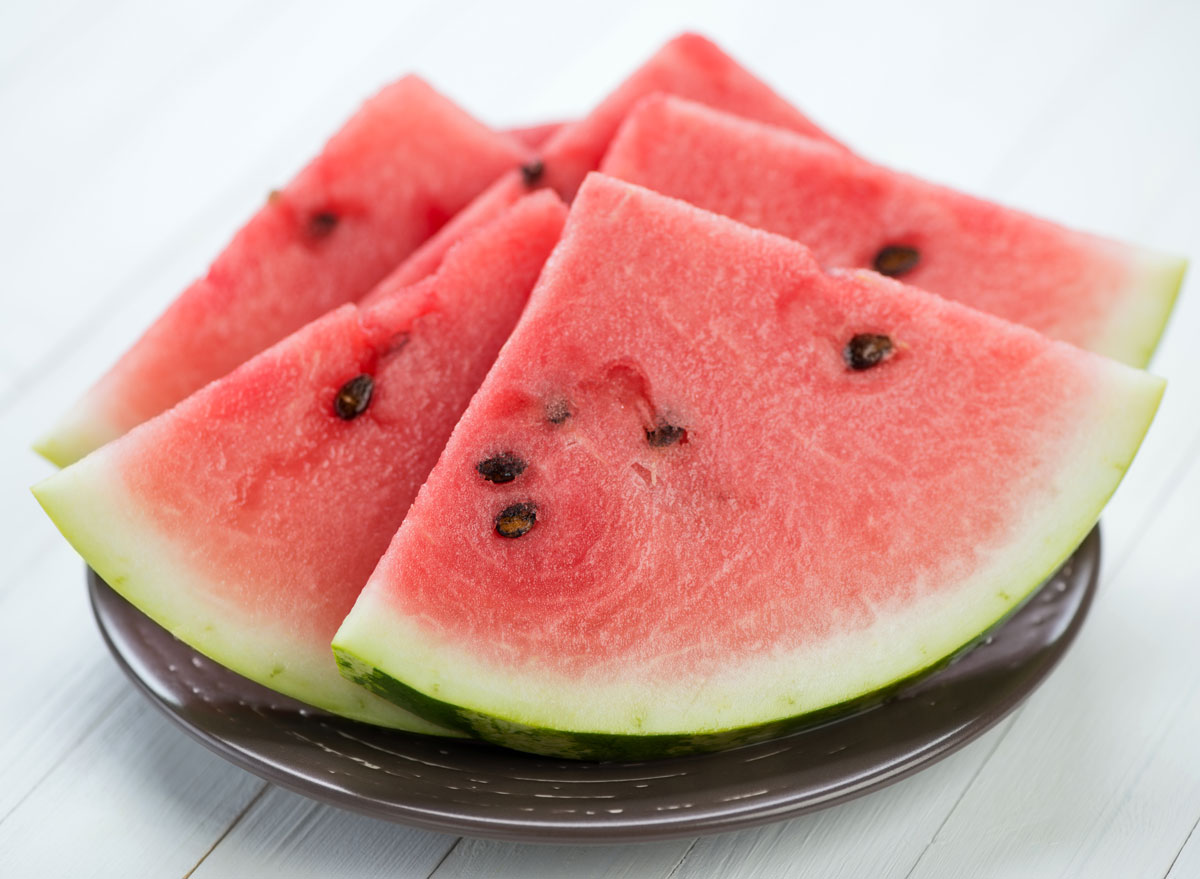
Tired of staring at the bags under your eyes every morning? This summer fruit can help you look doe-eyed way past the big 4-0! “Though it may sound counterintuitive, the high concentration of water in watermelon can actually reduce the water retention that leads to puffiness around the eyes,” says Baumann. “And because watermelon is low in sugar—well, compared to many other fruits—you don’t have to worry about glycation, the chemical reaction that compromises collagen and leads to lines and wrinkles.”
Apples
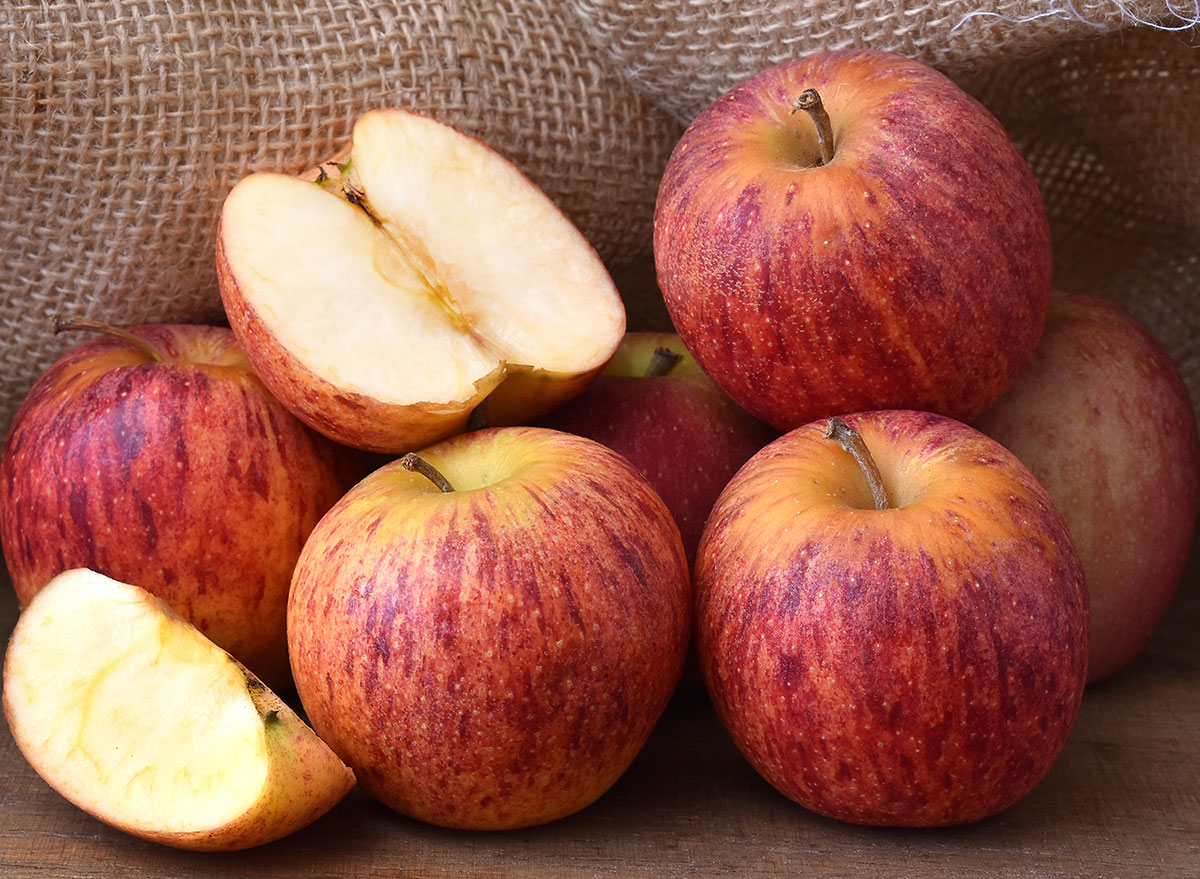
An apple a day can keep heart disease away. A study in the American Journal of Clinical Nutrition found that women who regularly ate apples were found to have a 13 to 22 percent lower risk of coronary disease than those who didn’t bite into the crunchy fruit.
Kale
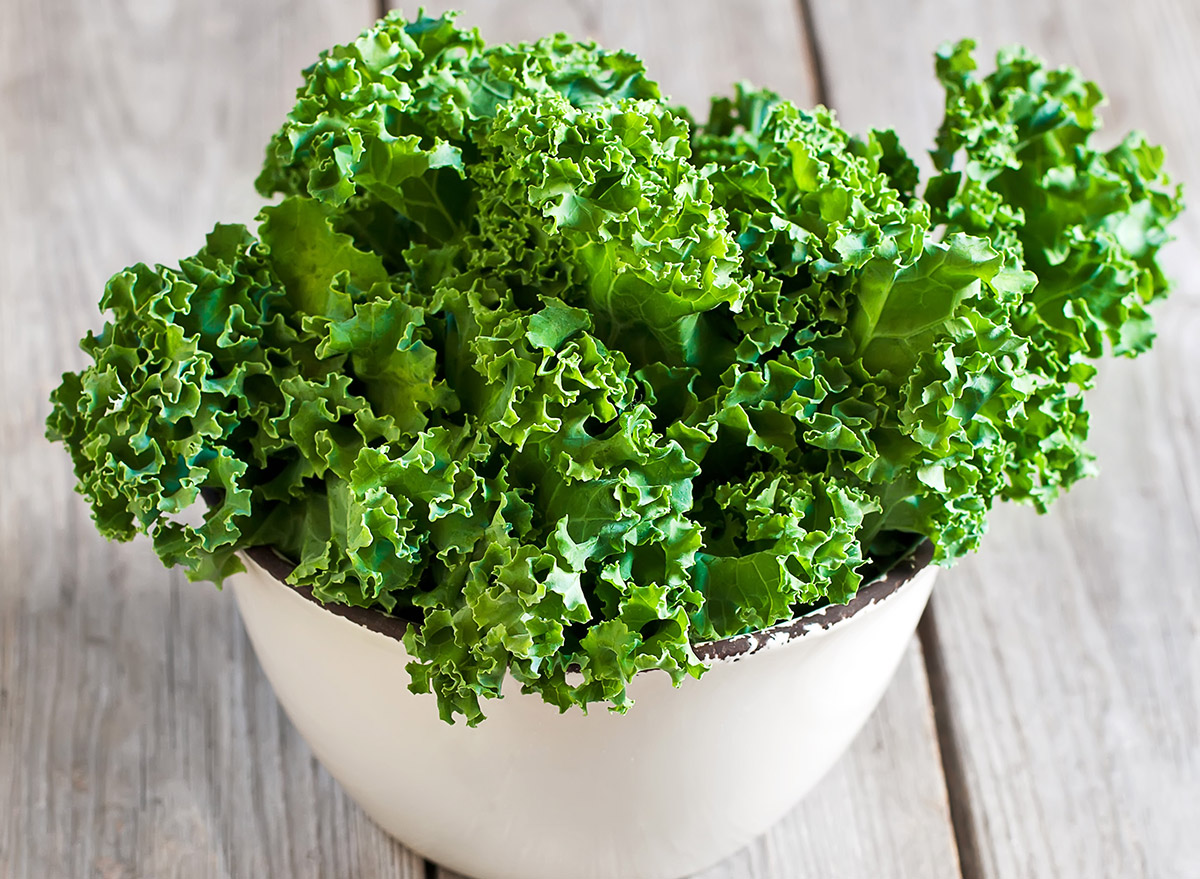
This fiber-filled smoothie star is packed with anemia-fighting folate and vitamin C to help your immune system combat winter colds with minimal effort. Good thing there are countless ways to reap the benefits of this leafy green besides blending it. Try cooking up a kale quiche or scramble. You can also coat the veggie with olive oil and salt before popping it into the oven if you’re craving a crunchy and healthy snack.
Honey
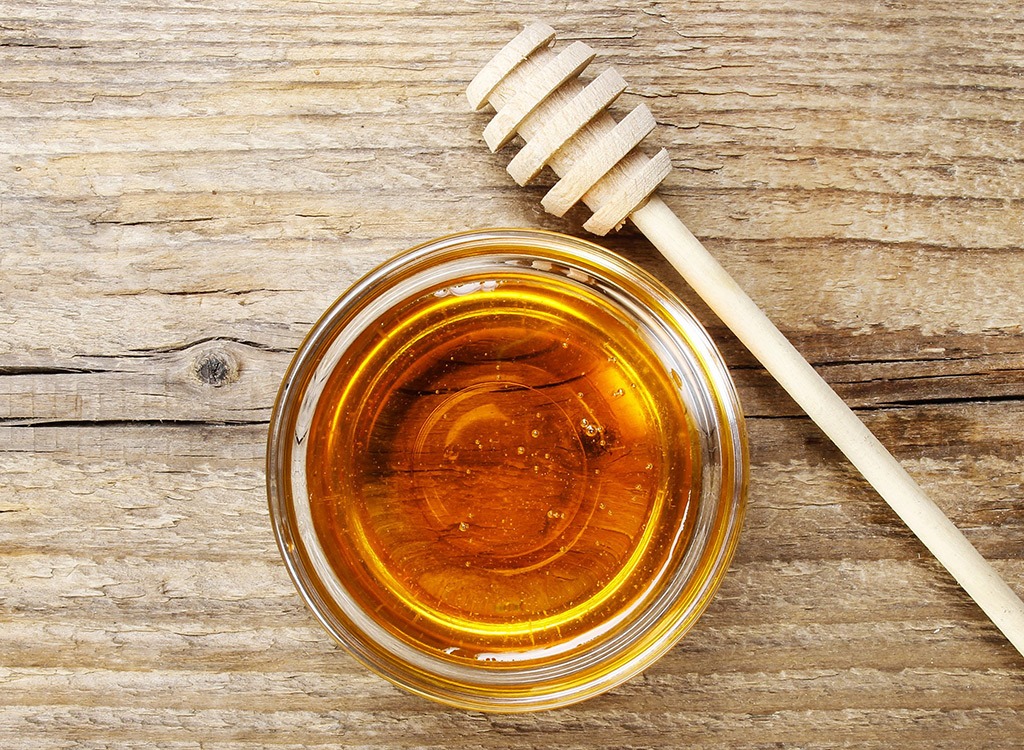
Not all sugars are created equal, which is why we prefer to sweeten things up with a natural source. Unlike artificial sweeteners, honey contains minerals like copper, iron, magnesium, manganese, phosphorus, potassium, sodium, and zinc that help boost your immune system and overall well-being. Next time your a.m. oats are tasting a bit bland, try drizzling in some honey and a sprinkle of cinnamon, our next must-buy superfood.
Cinnamon
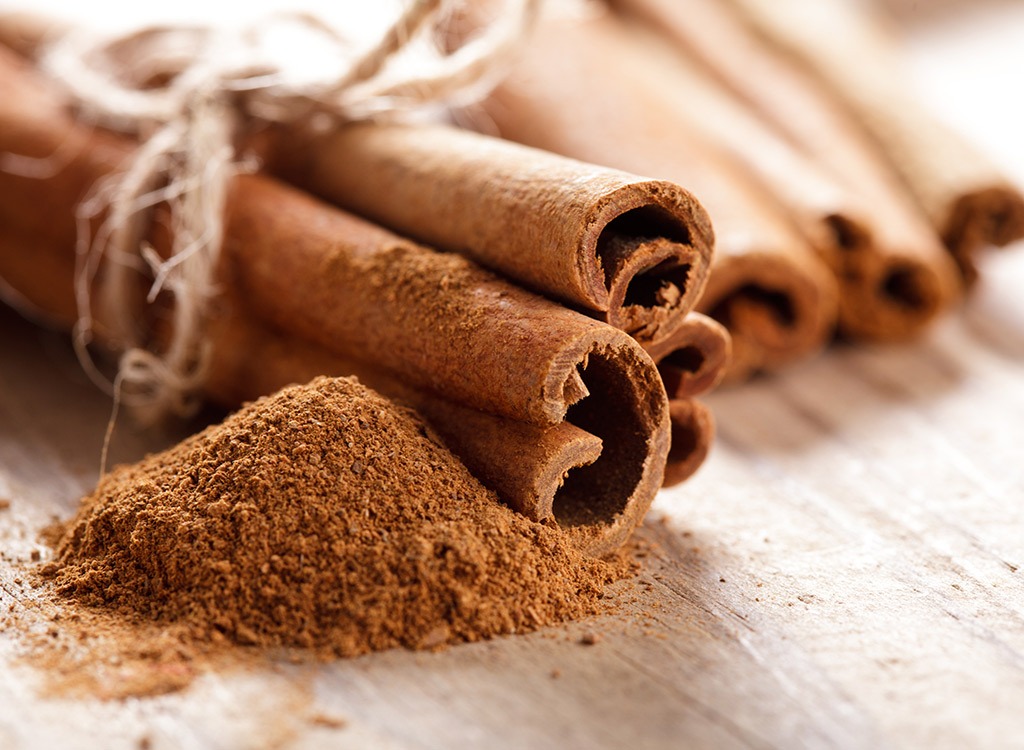
Regret dumping that extra teaspoon of sugar into your overnight oats? Undoing the damage can be as simple as sprinkling some cinnamon in! This warm spice may help reduce high blood sugar levels associated with sugar consumption as well as prevent pesky insulin spikes. One study published in the Journal of the International Society of Sports Nutrition found that the oatmeal topper can help reduce your risk for diabetes and heart disease.
Olive Oil

In their quests to get trim, many dieters think that refraining from a few olive oil drizzles will help cut calories and boost overall weight loss; meanwhile, it’s actually the complete opposite. The heart-healthy oil helps unlock the nutritional benefits of fat-soluble vitamins’ (vitamins A, D, E, and K, which are found in many veggies like salad greens). Olive oil is also linked to reducing weight circumference and preventing heart disease, giving you the green light to dress that spinach salad.
Collard Greens
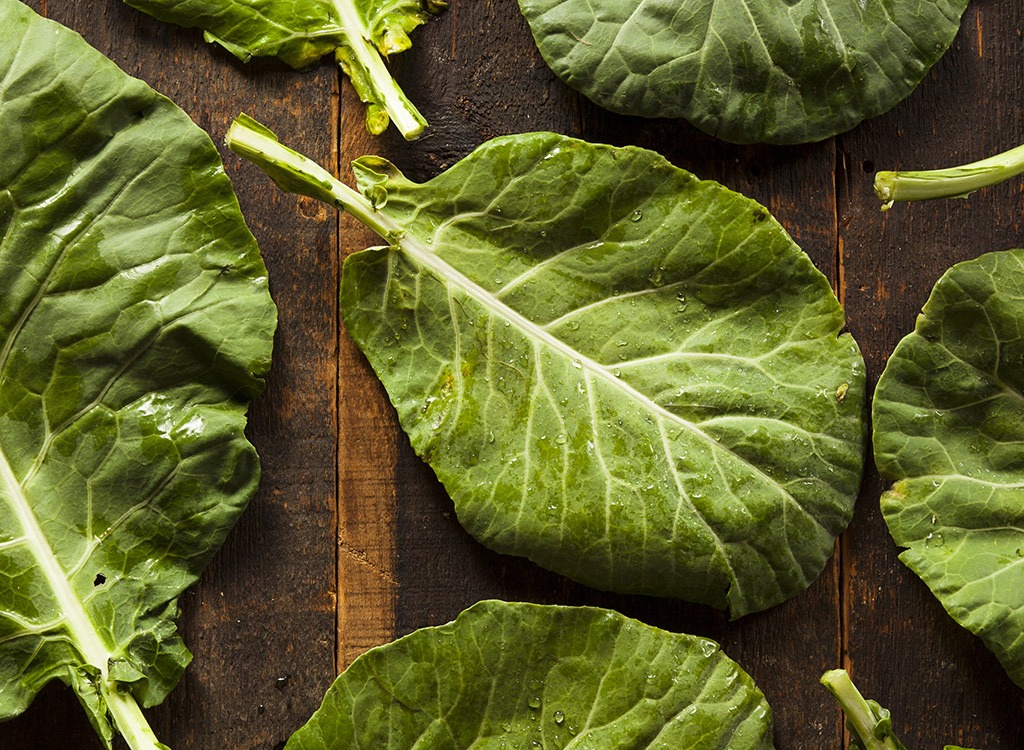
Just one cup of collard greens offers 36 percent of your daily vitamin A requirement, and vitamin A is essential for maintaining strong vision and resilient skin. Not only that, but this Southern favorite is also a rich source of flu-fighting vitamin C as well as satiating protein and fiber.
Garlic

A natural detoxifier, garlic can improve your cholesterol profiles as well as reduce high blood pressure. Plus, a study in the Japanese Journal of Cancer Research found that frequent intake of garlic can protect against esophageal cancer and stomach cancer.
Grass-Fed Beef

“As we age, we start to lose muscle mass, but we’re still able to build and maintain. I do strength exercises and cardio exercises, but they won’t be as beneficial without sufficient protein,” says Maria-Paula Carrillo, MS, RDN, LD. Grass-fed beef, a potent protein source, contains more omega-3s as well as fat-burning CLA than its grain-fed counterparts.
Spirulina

This protein-packed blue-green alga is brimming with energizing thiamine (vitamin B1), as well as calcium and iron. Add it to your morning smoothies for a free radical-fighting antioxidant boost.
Guava
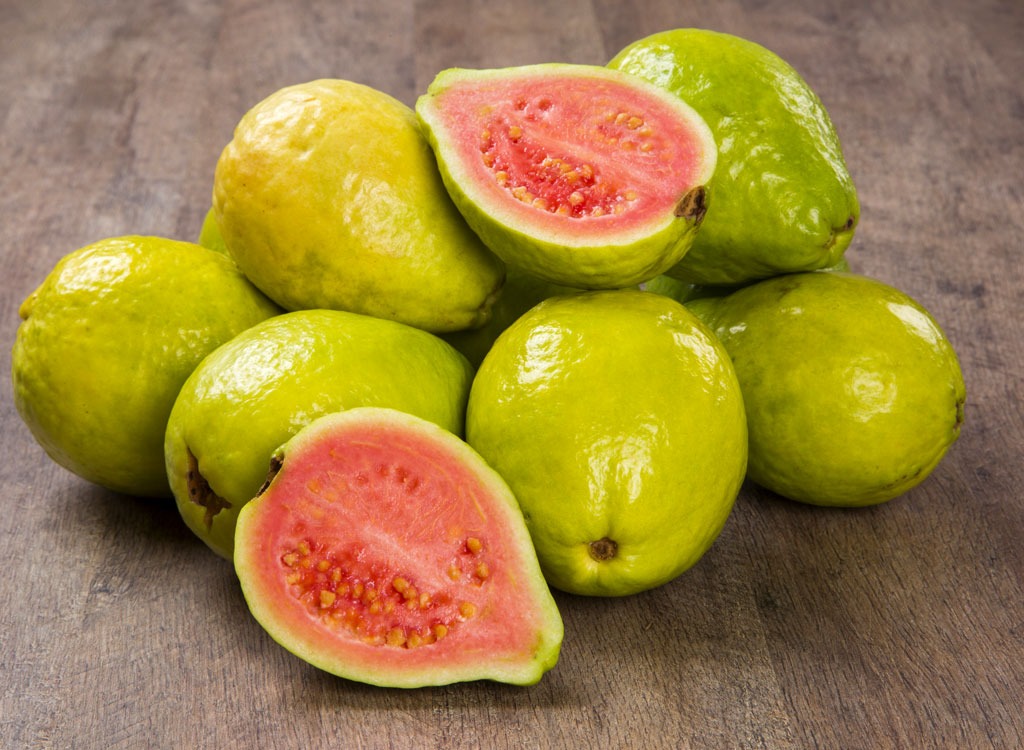
Guava provides more than 600 percent of the day’s vitamin C in just one cup! Compare that to an orange, which contains just 85 percent of the cold-preventing vitamin. Not only that, this tropical fruit has just over four grams of protein per cup, making it a smart Greek yogurt pairing.
Eggplant

Thanks to eggplants’ anthocyanins, eating the veggie will provide you with impressive neuroprotective benefits like a sharper short-term memory and reduced inflammation. As if you needed another reason to toss them into your next stir-fry!
Grapes
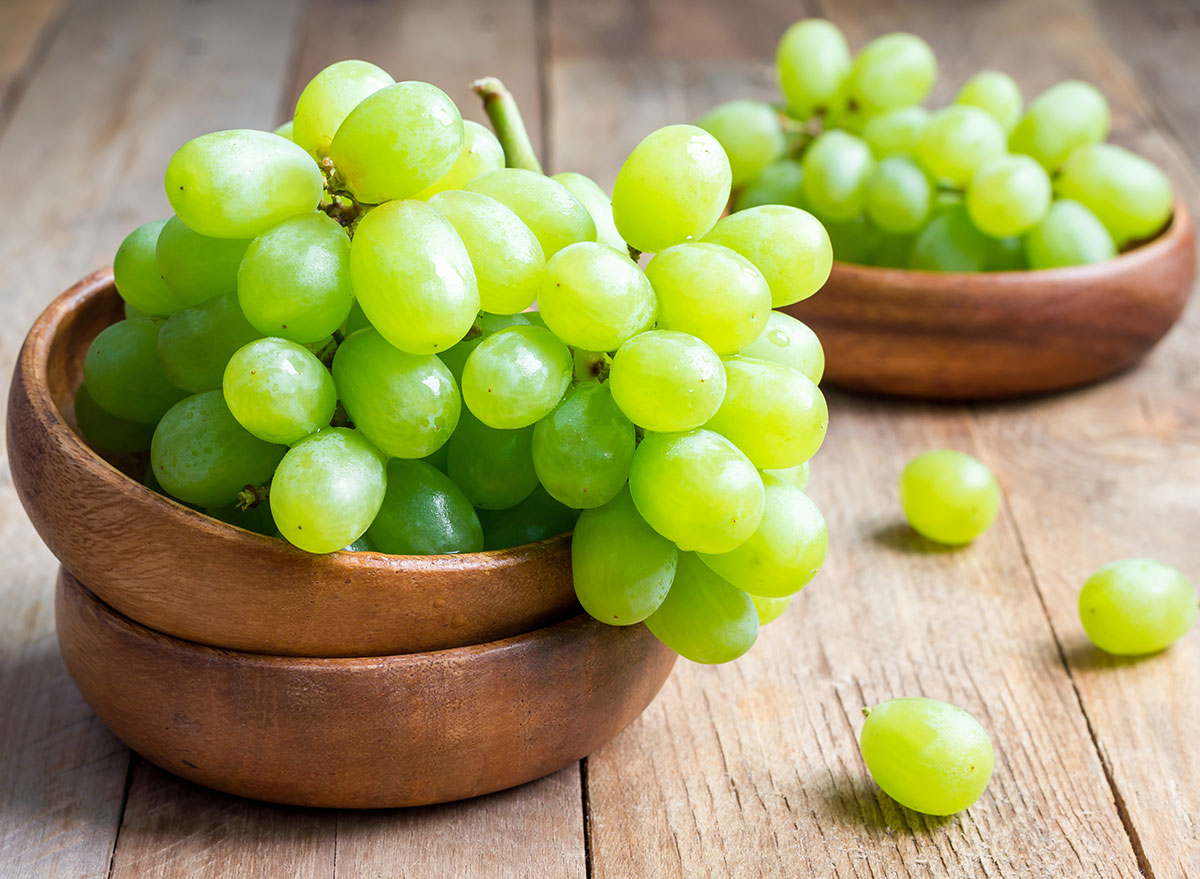
Much like the vino they form the base of, grapes are jam-packed with resveratrol, an antioxidant-like polyphenol that has been linked to slashing your risk of heart disease and cancer.
Broccoli

“To balance hormones, such as leptin, the diet must contain high fiber vegetables to stabilize leptin levels by making you feel full longer. They’ll balance cortisol, vitamins, minerals, antioxidants,” says Lisa Avellino, Fitness Director at NY Health and Wellness. “The fiber found in cabbage, broccoli, or Brussels sprouts help stabilize blood sugar and insulin by slowing down digestion.”
Cauliflower
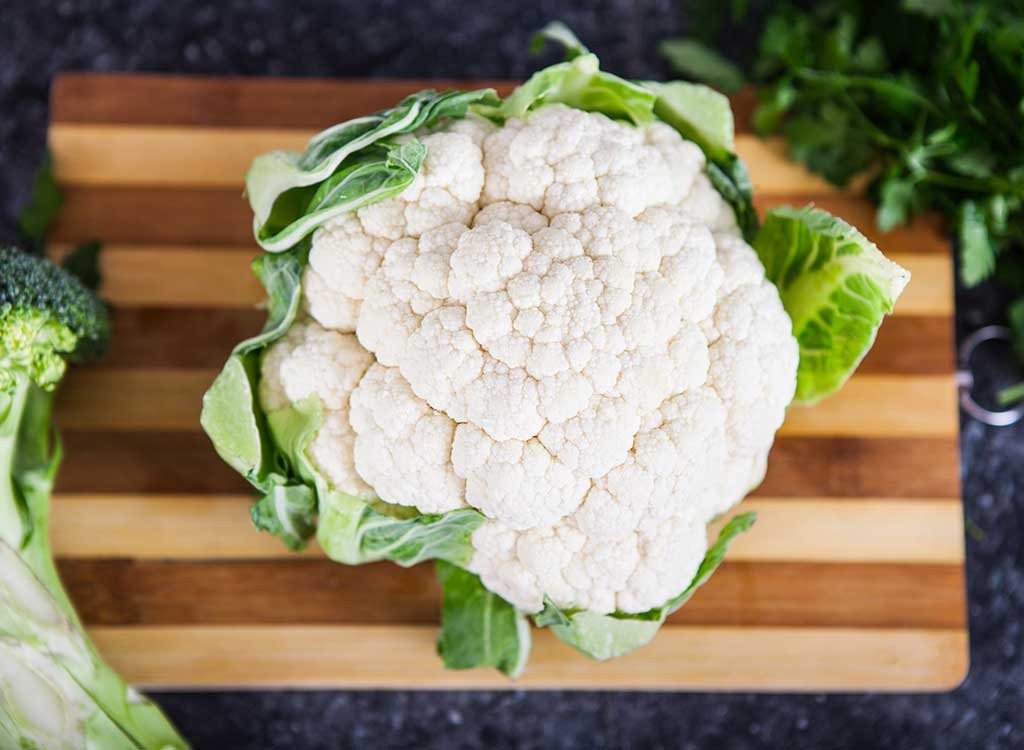
Just like their cruciferous brother broccoli, cauliflower boosts your satiety with a generous helping of fiber. Not only that, this flowery veggie contains two cancer-fighting compounds, glucosinolate, and isothiocyanates, which have also been shown to boost antioxidant status.
Maca
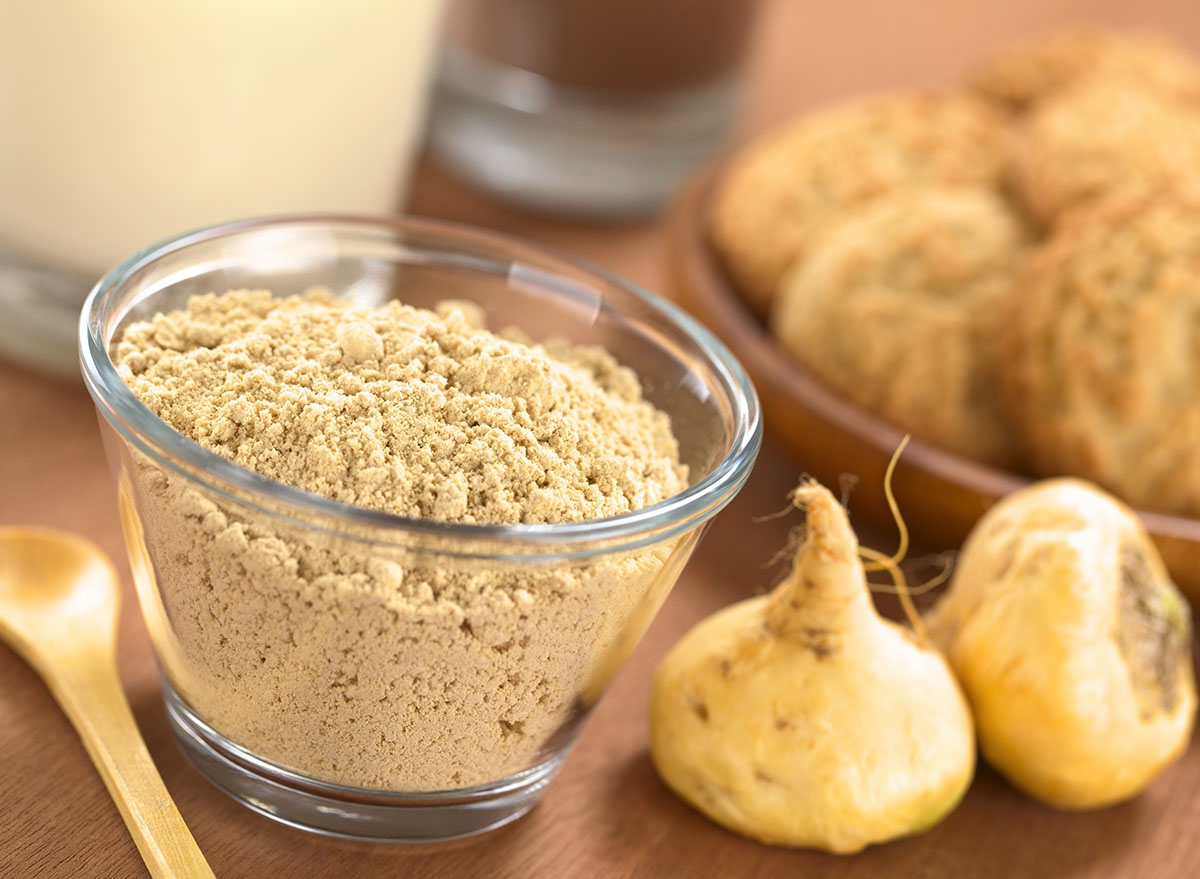
This Peruvian root plant is usually found in powder form, which makes it almost effortless to reap its benefits. Maca is rich in amino acids, phytonutrients, and a number of vitamins and minerals, admits registered dietitian Manuel Villacorta, MS, RD. Maca is also a stellar energy booster and inflammation killer.
Bone Broth
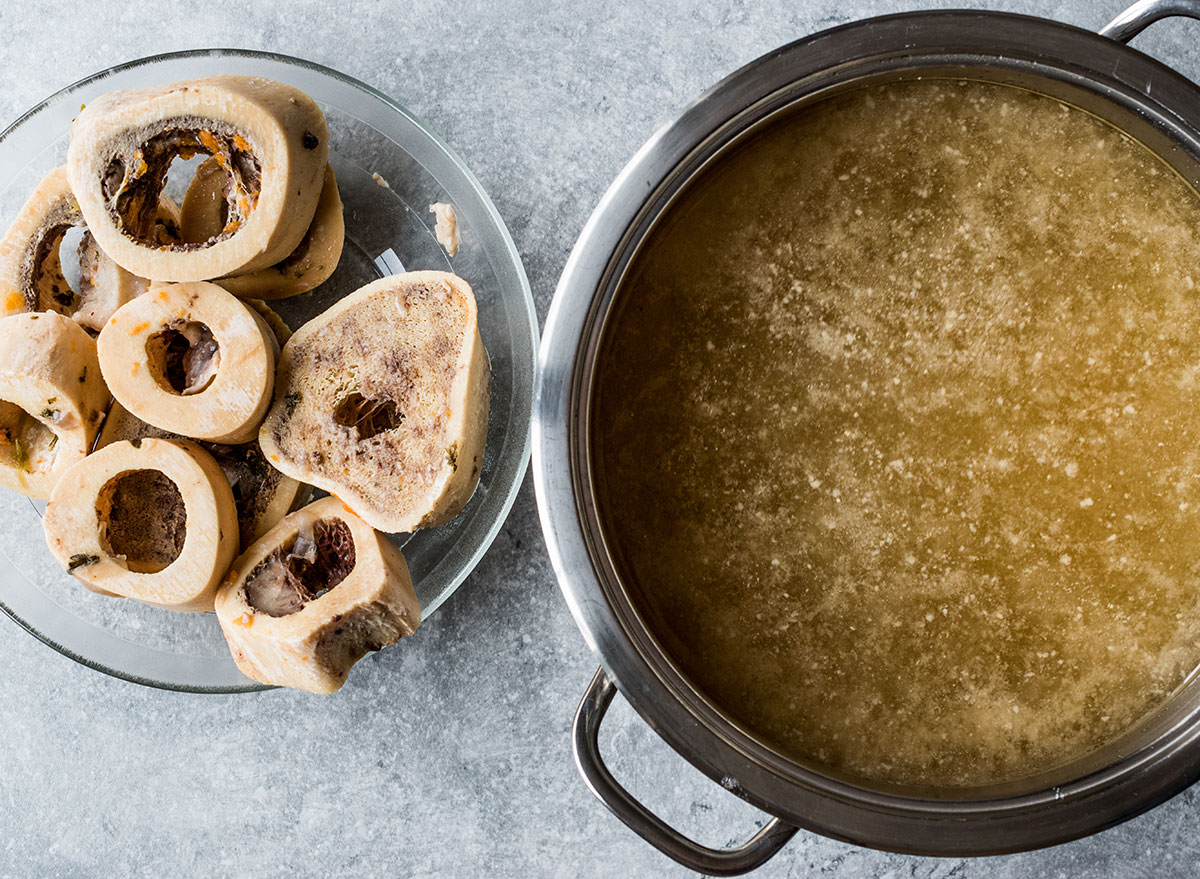
Bone broth is exactly what it sounds like. When animal bones simmer in water for a while, the process extracts their collagen and other nutrients, such as glucosamine. According to a study published in the journal PLoS One, when overweight, middle-aged adults took a glucosamine supplement, they were able to decrease inflammation biomarker serum CRP levels by 23 percent more than those who didn’t supplement their diets with glucosamine. In addition, bone broth contains the amino acids glycine and proline in addition to gelatin, which can help rebuild your gut lining to help your body’s biome function on its A-game.
Black Pepper
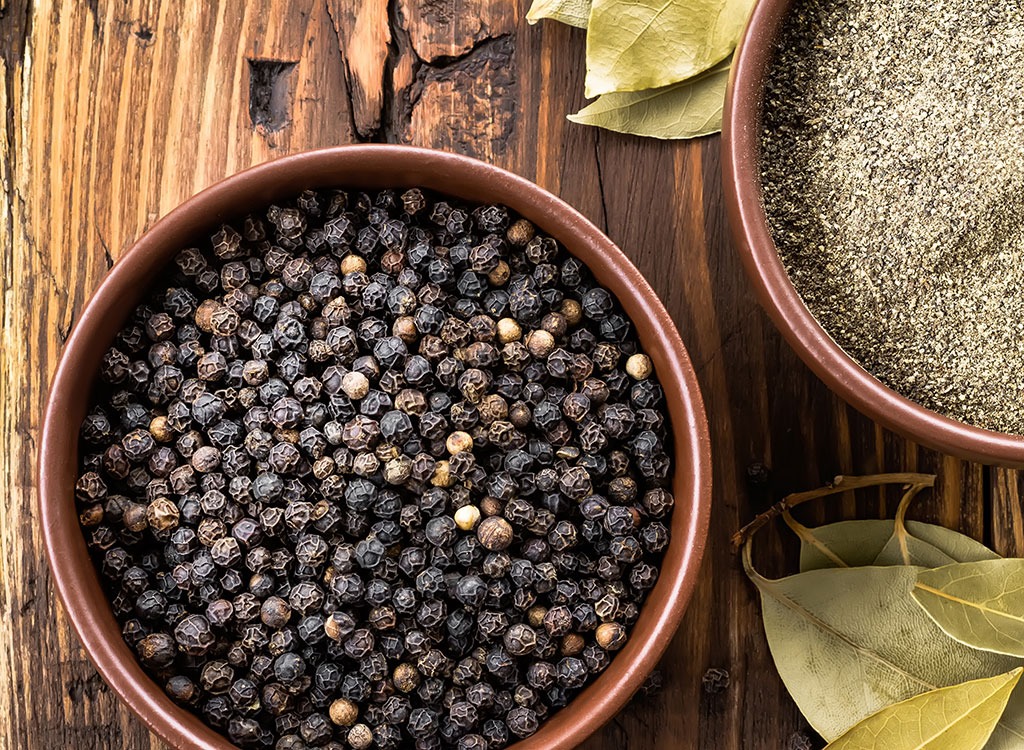
Pepper contains piperine, a powerful compound that holds the power to fend off inflammation and digestive troubles.
Pumpkin Seeds
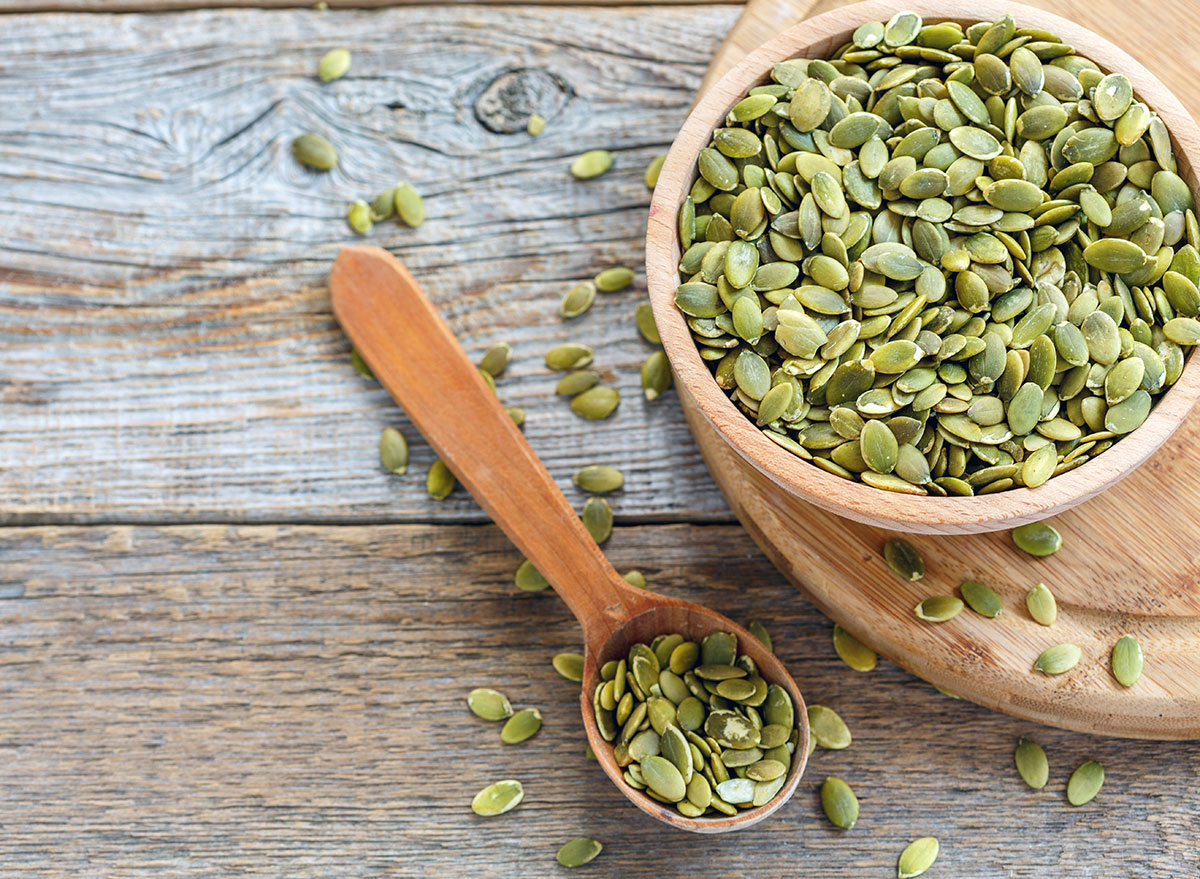
Per cup, pumpkin seeds contain about half the calories of almonds yet pack in an extra gram of fiber! Satisfyingly crunchy pepitas are also high in iron, potassium, phosphorus, magnesium and immune-system-boosting zinc.
Teff
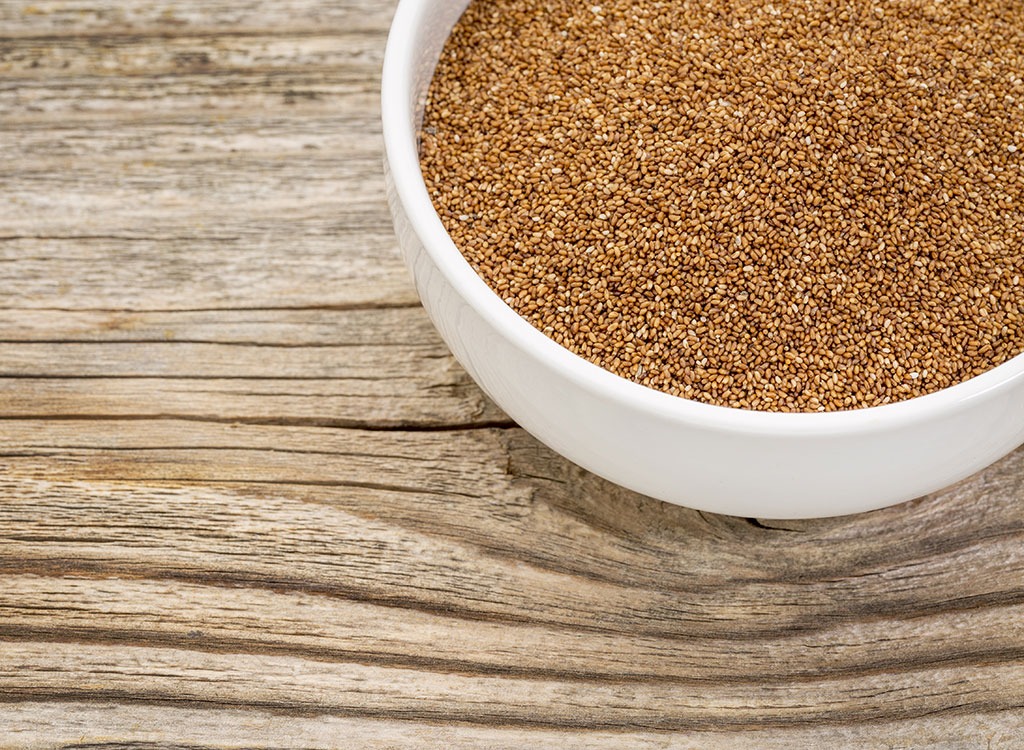
You likely haven’t heard of this nutty-flavored gluten-free grain, but it packs a nutritional punch that’s worth reckoning with. Teff is loaded with fiber, amino acids, bone-building calcium and de-stressing vitamin C, a nutrient that balances levels of the stress hormone cortisol, helping combat belly fat.
Quinoa
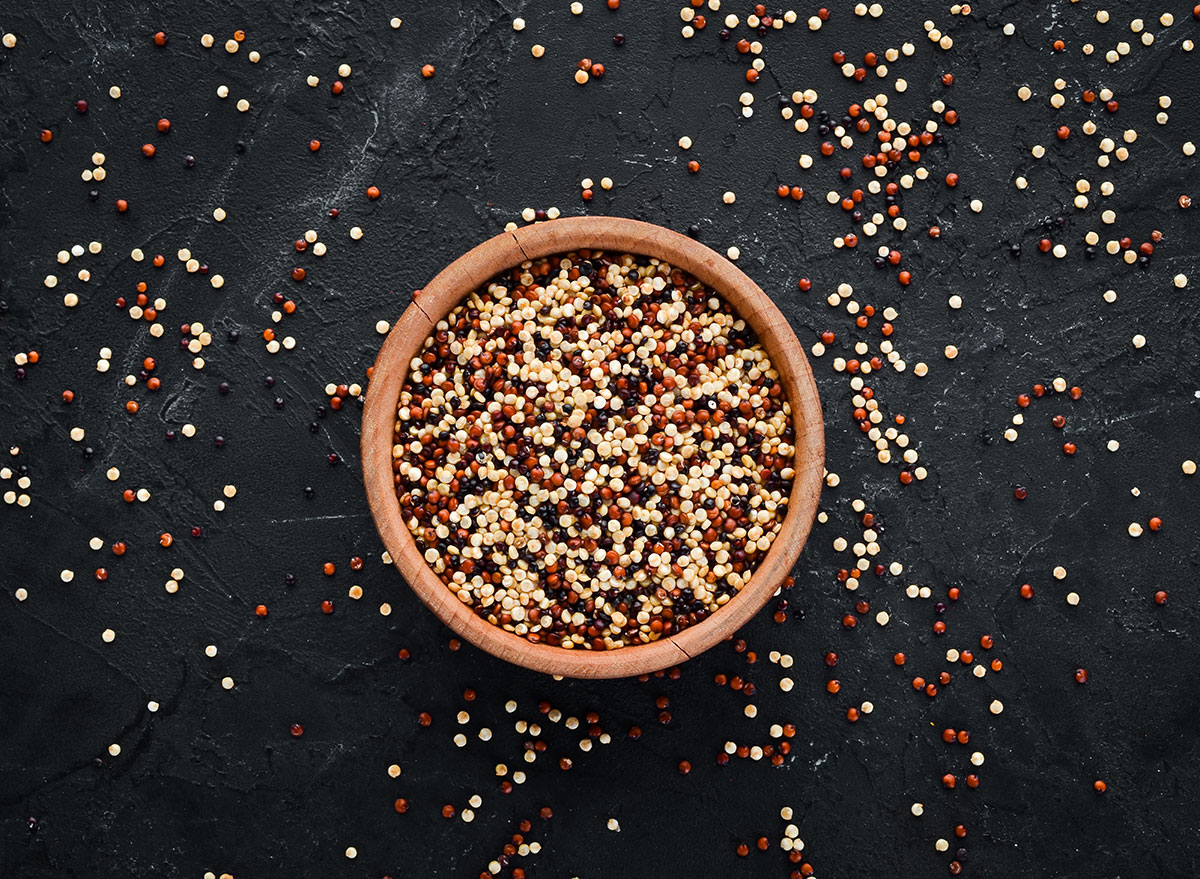
Another gluten-free grain, quinoa is loaded with protein as well as all nine essential amino acids that we need for energy and growth. What’s more, “Whole grains give us fiber, which is key to helping digestion and satiety,” Carrillo says. “They allow you to stay satisfied for longer. Whole grains prevent the rise in blood sugar as well and help to regulate blood sugar. They also work to reduce cholesterol, which is heart healthy.”
Steel-Cut Oats
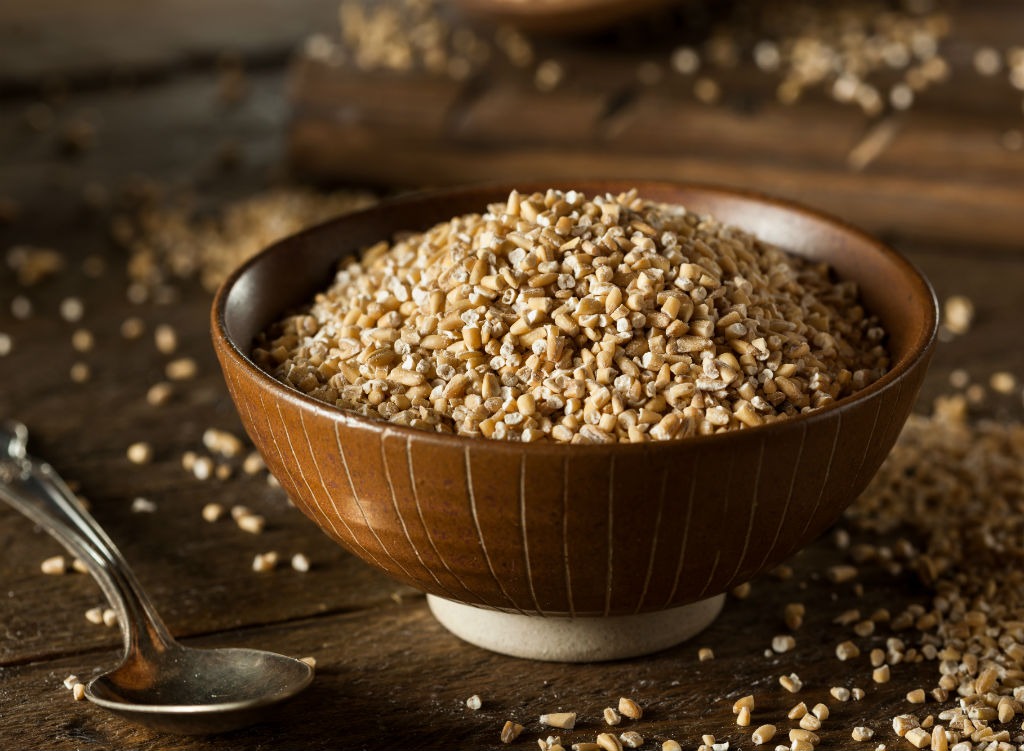
“Cutting back on processed carbohydrates is essential for weight loss after 40,” says Jennifer Cassetta, clinical nutritionist, personal trainer and health expert from ABC’s My Diet Is Better Than Yours. “Maintaining blood sugar and insulin levels is vital to weight loss, so cutting back on foods that spike blood sugar and insulin is a must.” A good place to start would be by replacing the refined carbs in your diet with unsweetened steel-cut oatmeal. Oats are a solid source of blood sugar-regulating magnesium, a nutrient that also helps boost fat burn.
Beets

Beets contain a powerful nutrient called betaine, which lends the root veggie its rich red hue as well as fights inflammation, boosts metabolism, improves your mood, and turns off your fat genes.
Ginger
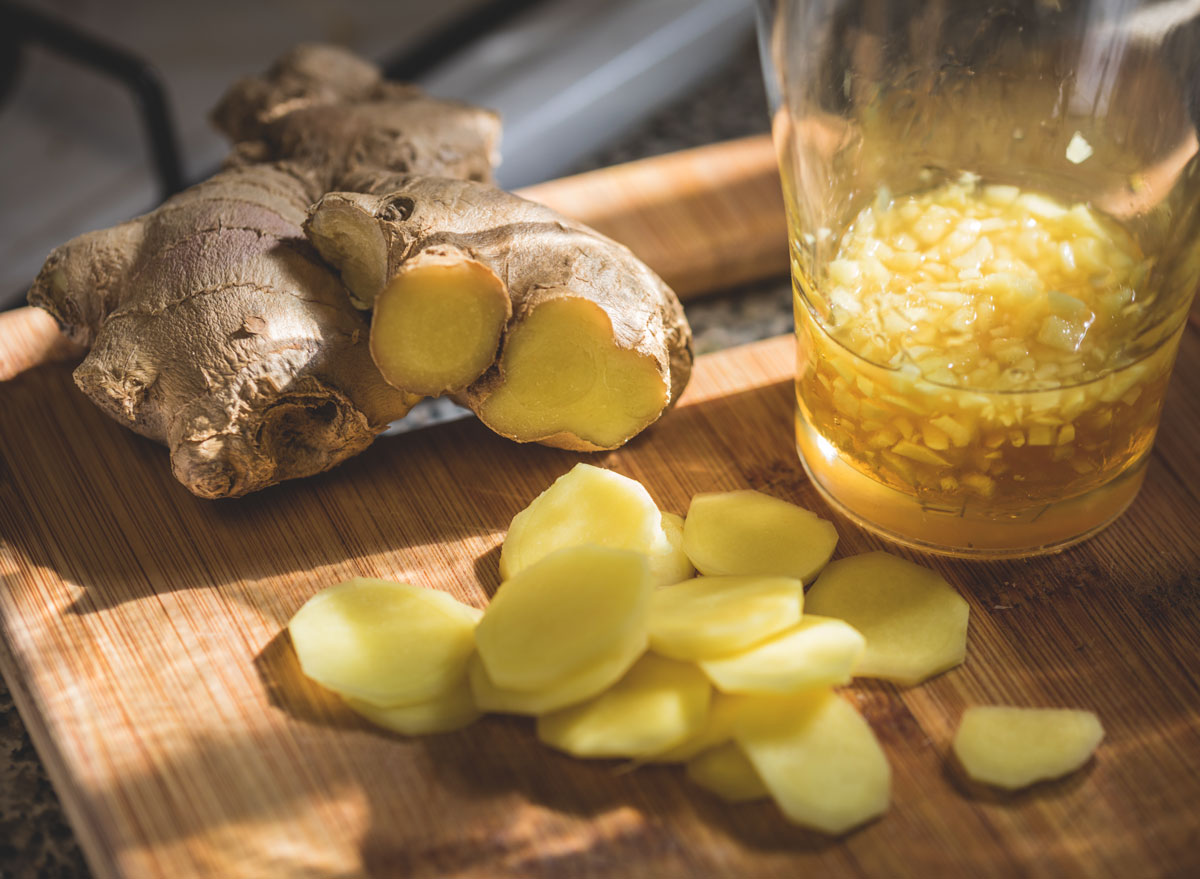
An ancient remedy for obnoxious tummy troubles, ginger is a natural miracle worker when it comes to your gut. But its powers aren’t limited to ridding your body of nausea and bloat—this root spice has also been linked to slashing cancer risk and reducing arthritis symptoms. Researchers attribute ginger’s health benefits to its gingerols, antioxidant, anti-inflammatory, antibacterial, and anti-disease compounds.
Cayenne
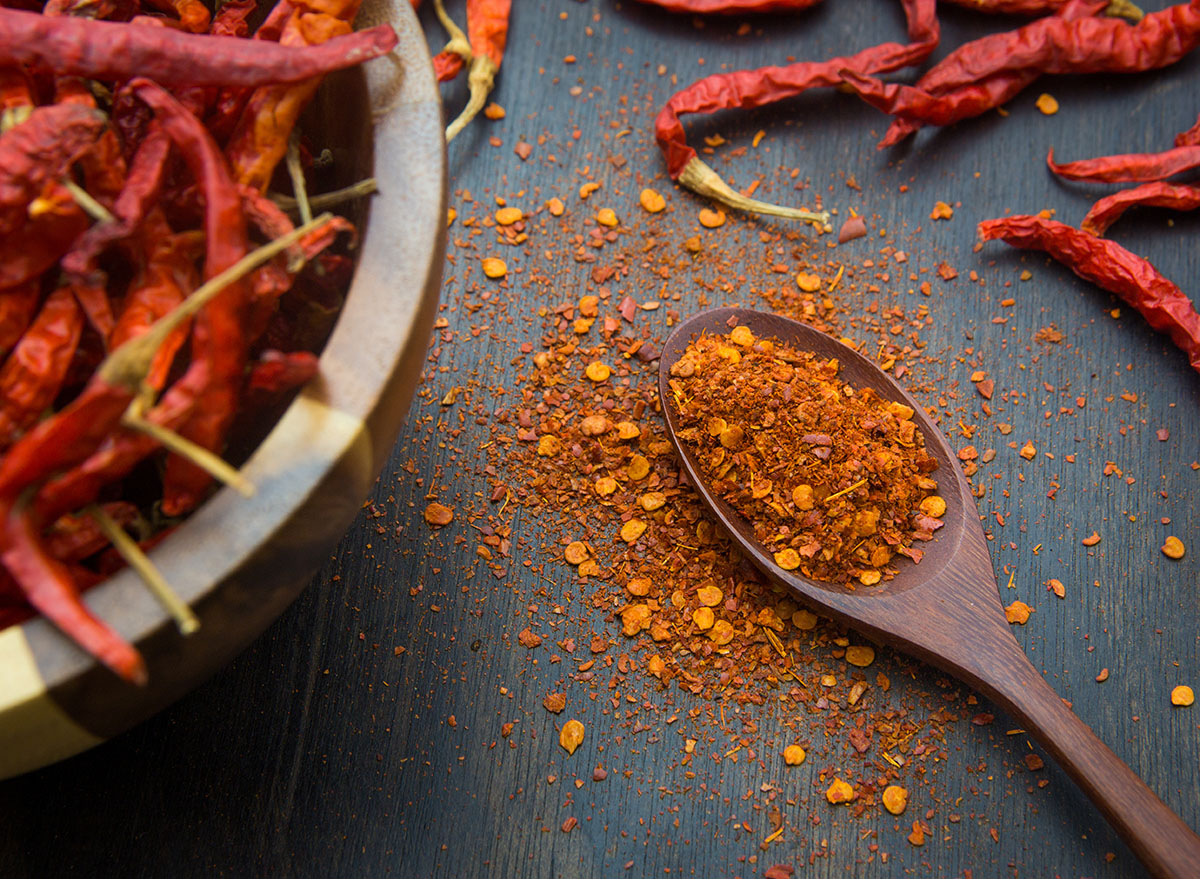
Ditch the Sriracha and grab a bottle of cayenne instead! The fiery pepper contains a compound called capsaicin, which has been shown to act as a serious appetite suppressant. According to a study in the American Journal of Clinical Nutrition, those who supplemented their diet with capsaicin consumed 200 fewer calories during their next meal—which is why cayenne is one of our foods to lose your gut.